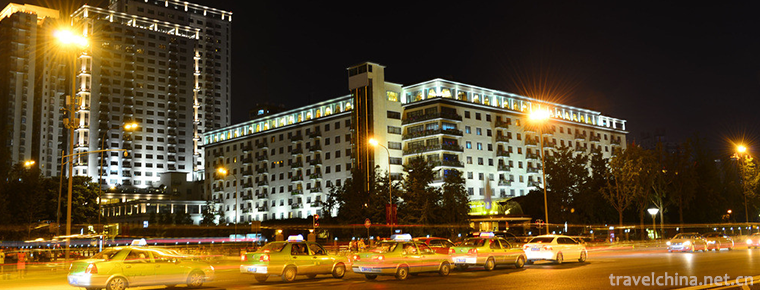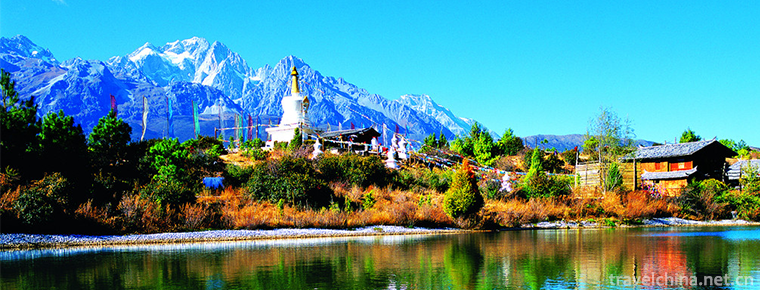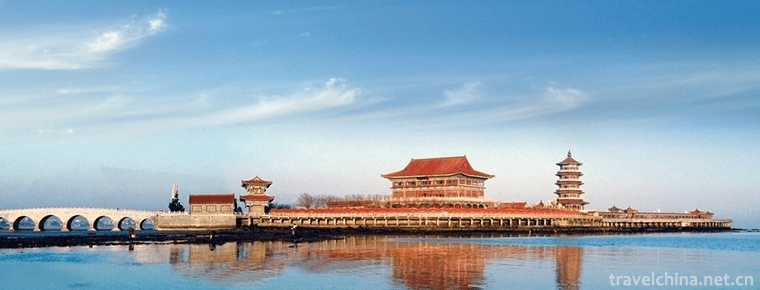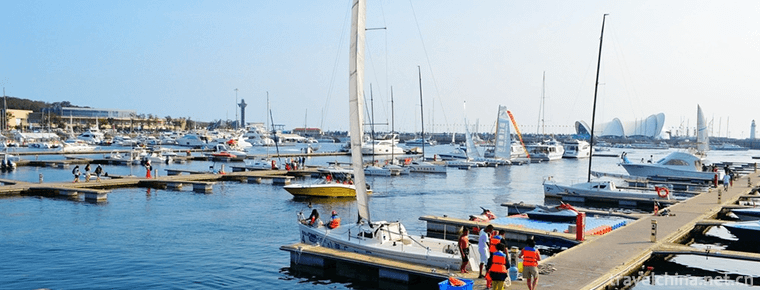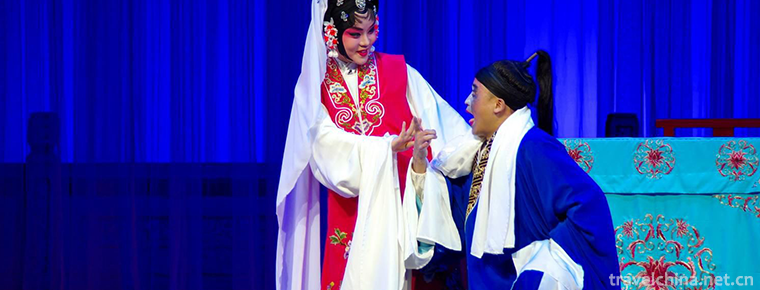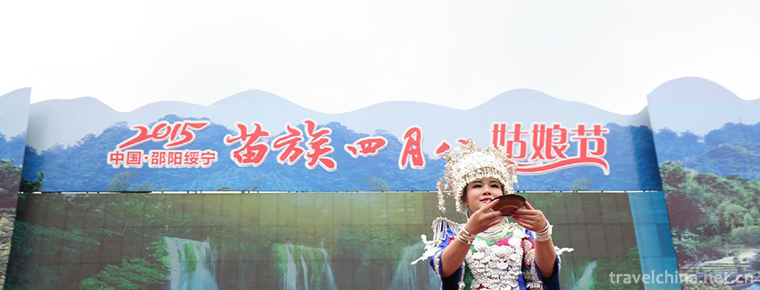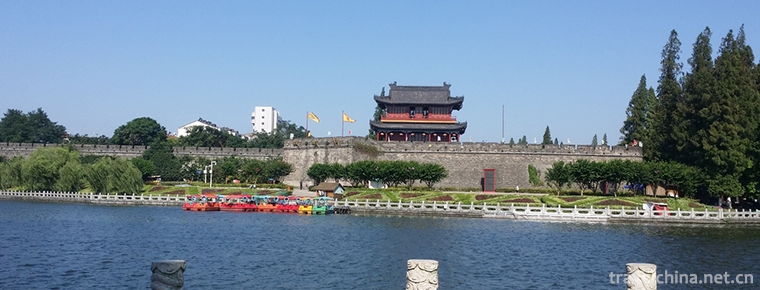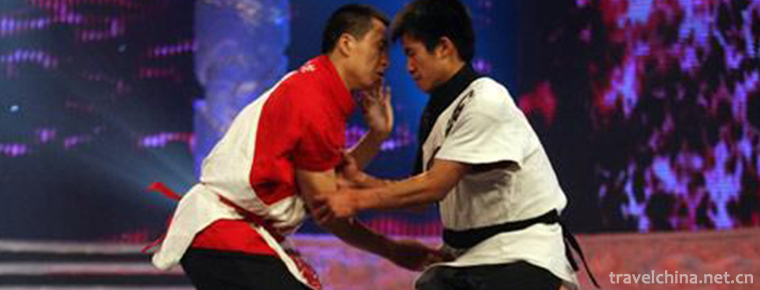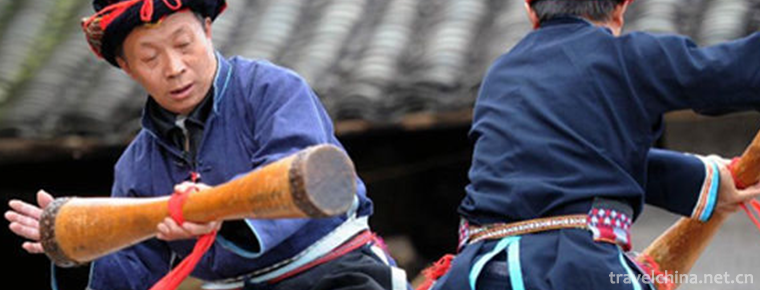Shenyang Botanical Garden
Shenyang Botanical Garden, located in Dongling District of Shenyang, also known as Shenyang World Expo Garden and Shenyang World Horticulture Expo Garden, is a multi-functional comprehensive tourist attraction integrating green ecological ornamental, fine garden art, humanistic landscape architecture, scientific research, popular science education and entertainment and leisure activities. Founded in February 1959, it was officially opened to the outside world in 1993. It covers an area of 211 hectares. Taking Lily Tower, Phoenix Square and Rose Garden as the symbolic theme buildings, it gathers the gardens and architectural works of five continents in the world and key cities in China. A total of 100 exhibition gardens are distributed in the north and South regions.
Shenyang Botanical Garden is the site of the 2006 Shenyang World Horticultural Exposition in China. It is known as the World Expo Garden in the Forest. It has been awarded the honorable titles of "Fifty Great Sceneries of Liaoning Province", "Fifteen Great Tourist Landscapes of Shenyang City" and "Ten Ten Popular Science Education Bases of Shenyang City". In 2004, it was awarded the first batch of 5A-level tourist attractions. Area title.
According to historical records, "old station", "Gaokan", "Shangma", "Zhongma", "Zhongma", "Xiamajiawanzi", "Yantai", "Qijiafang" and "Zhongshuiquan" around Shenyang Botanical Garden were all established in the early Qing Dynasty. An ancient village. Among them, the old station, Gaokan, seven rooms and Yantai used to have "Xiangyun Temple", "Longquan Temple", "Qingyun Temple" and "Guandi Temple" (none of them exists today). The old station was many years earlier than other villages. Before the South Gate of Shenyang Botanical Garden, Shenfu Highway (North Line) was still a thousand-year-old road, which was called "Great Royal Road" in the Qing Dynasty. In that year, Emperor Kangxi, Emperor Qianlong, Emperor Jiaqing and Emperor Daoguang made many routes to and from Shengjing (Shenyang) and Xingjing (Xinbin) to worship ancestral mausoleums. Jianling troops should set up "Jianying" in Yantai Village to provide the emperor with lunch. At that time, officials of Shengjing Wupin and above will gather in Yantai Village and kneel down to welcome the emperor into the capital.
The Shenyang-Fujian Railway, originally known as the Fenghai Railway, was built in 1925 by the people of Northeast China on their own. Previously, railways in the Northeast were built by imperialist powers. Fenghai Railway is an important historical relic in the past hundred years of Northeast China. It is also a textbook for patriotic ideological education to young people.
In 1958, Chairman Mao Zedong visited the old station (the seat of Gaokan Commune) on his way to Fushun. Planning for the Botanical Garden here the following year
Shenyang Botanical Garden was built in February 1959. Comrade Jiao Ruoyu, the first Secretary of the Shenyang Municipal Committee, instructed Shenyang Municipal Construction Bureau and Shenyang Institute of Forestry and Soil of the Chinese Academy of Sciences to jointly establish Shenyang Botanical Garden.
In 1962, it was taken over by Shenyang Landscape Architecture Department. During the Cultural Revolution, it was abolished and merged into Donghui Forest Farm. It was restored in 1973.
In 1981, Shenyang Landscape Architecture and Shenyang Greening Department were separated, and the Botanical Garden was classified as the greening department.
In 1988, it was changed to Shenyang Institute of Landscape Sciences. Specialized gardens such as arboretum garden and special plant ornamental areas were built. Relying on the natural advantages of Lake surface, the Tieshao Bridge was built.
On July 18, 1993, the Shenyang Municipal Government approved the formal opening up. Since then, Shenyang Botanical Garden has embarked on the road of joint development of scientific research, popular science and tourism.
In 1994, it was reoccupied to Shenyang Urban Construction Bureau and became a public institution directly under the Bureau.
In April 2002, according to the overall planning for the development of the eastern tourism region, the Shenyang Botanical Garden was classified as the Management Committee of the Chebanshan Development Zone of Shenyang from the original Shenyang Construction Administration Bureau.
In 2006, Shenyang Botanical Garden successfully hosted the 2006 China Shenyang World Horticultural Exposition.
In May 2015, after the National Tourism Administration issued a serious warning to Shenyang Botanical Garden, a 5A scenic spot, Shenyang Botanical Garden invested 80 million yuan in hardware improvement and implemented the ticket card system.
On October 9, 2015, the State Tourism Administration held a press conference to inform the recent verification of 5A scenic spots. After rectification and acceptance, the severe warning and punishment against Shenyang Botanical Garden in Liaoning Province, which was notified in April 2015, was revoked.
Shenyang Botanical Garden covers an area of 211 hectares. Among them, 196 hectares of green land, 6.5 hectares of water, 6.9 hectares of roads and buildings. There are four types of exhibition areas: Leisure Exhibition area, special exhibition area, domestic exhibition area and foreign exhibition area, with more than 100 exhibition parks. The overall layout is divided into North and south by Shenfu Railway. The southern half is a botanical garden, Cuihu Lake and rock climbing tourist area, Jingtan and Lingjiaogou recreational bridge area, popular science park, Xingxing Paradise Park and other major tourist parks. The northern half is a steam locomotive exhibition hall, hotels and plant planting area.
The Park collects a variety of plant resources in Northeast, Northwest, North China and Inner Mongolia. It has more than 2000 kinds of open woody plants, open herbs and greenhouse plants. It is the most widely collected plant exhibition garden in Northeast China.
In 1985, it was awarded "Civilization Unit" by the Shenyang Committee of the CPC and the Shenyang People's Government.
In 1990, it was awarded "Civilization Unit" by Liaoning Provincial Construction Committee.
In 1997, it was named "Fifty Great Sceneries of Liaoning Province" by the Provincial People's Government.
In 1997, it was named "the 15th National Tourism Landscape of Shenyang City" by Shenyang People's Government.
In 1997, it was named "Ten Popular Science Education Bases in Shenyang" by Shenyang People's Government.
In 1998, it was awarded "Civilization Unit" by Liaoning Provincial Construction Committee.
In 1999, it was recommended as "National Excellent Tourist City Demonstration Unit".
In 1999, it was awarded "Civilized Scenic Spot" by the CPC Liaoning Provincial Committee and the Provincial People's Government.
In 2000, it was awarded "Advanced Workers'Home" by Shenyang Federation of Trade Unions.
In 2000, it was awarded "Provincial Safety and Civilization Unit" by Liaoning Provincial Public Security Comprehensive Governance Committee.
In 2000, it was awarded "Advanced Unit of Spiritual Civilization Construction" by Liaoning Province.
In 2000, it was awarded "AAAA Tourist Area" by the state;
In 2001, it was awarded "Advanced Party Committee" by Liaoning Provincial Committee of the CPC.
In 2002, it was awarded "Advanced Unit of Tourism Employment" by the provincial government.
In 2002, it was awarded "Advanced Unit of Provincial Tourism" by the provincial government;
In 2005, it was awarded "Advanced Unit of National Creation of Civilized Scenic Spots" by the Central Civilization Office, the Ministry of National Construction and the State Administration of Tourism.
On May 8, 2007, Shenyang Botanical Garden was officially approved by the National Tourism Administration as a national 5A tourist attraction.
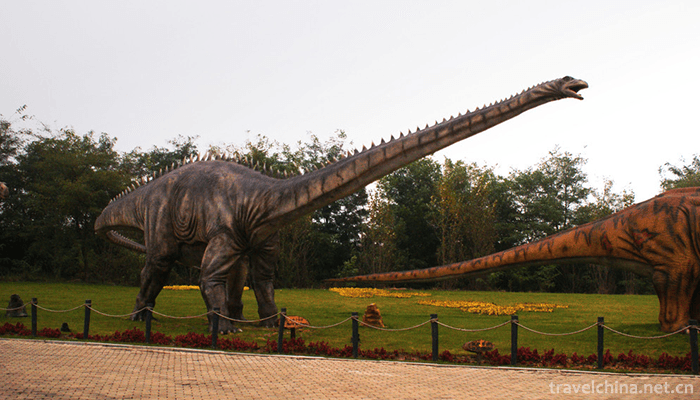
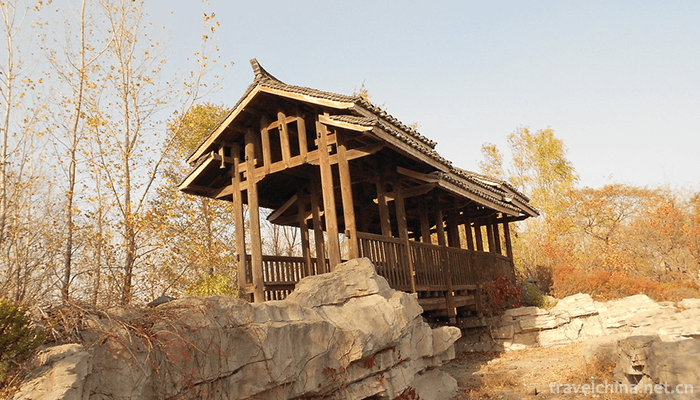

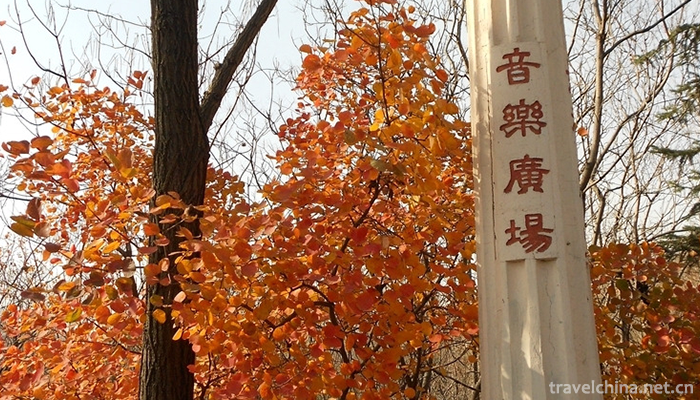
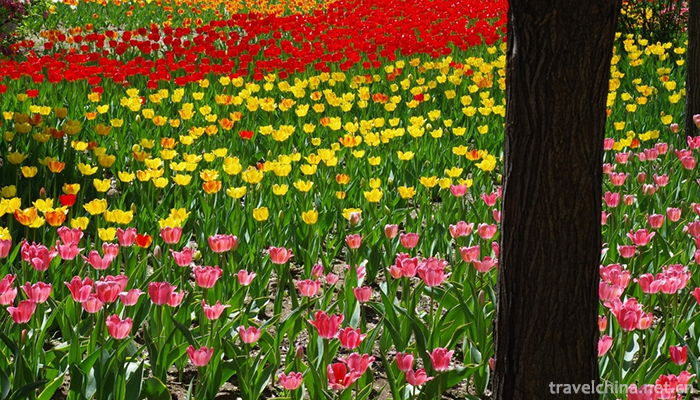
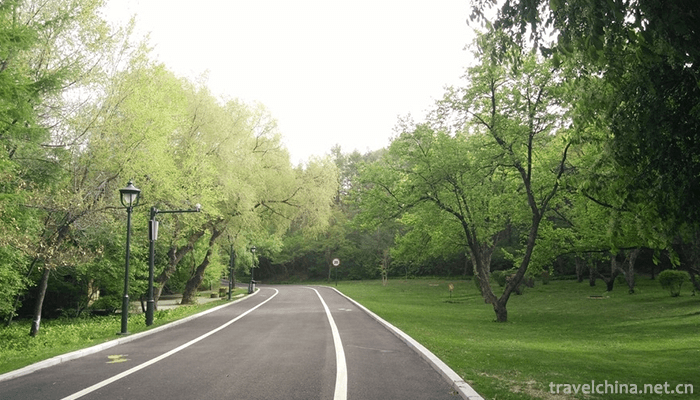
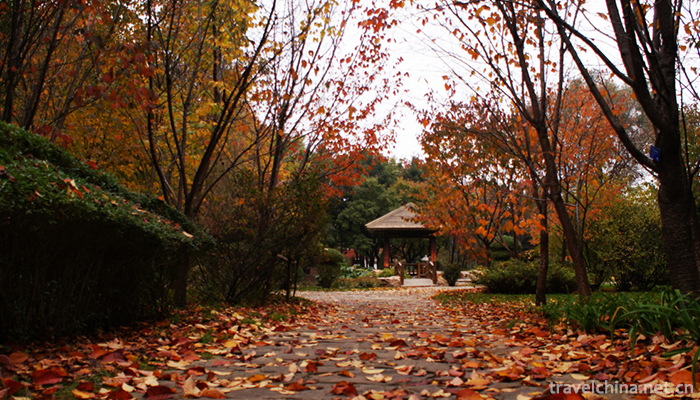
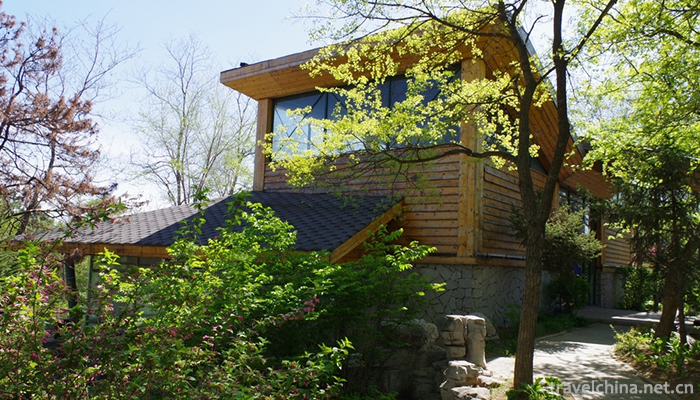
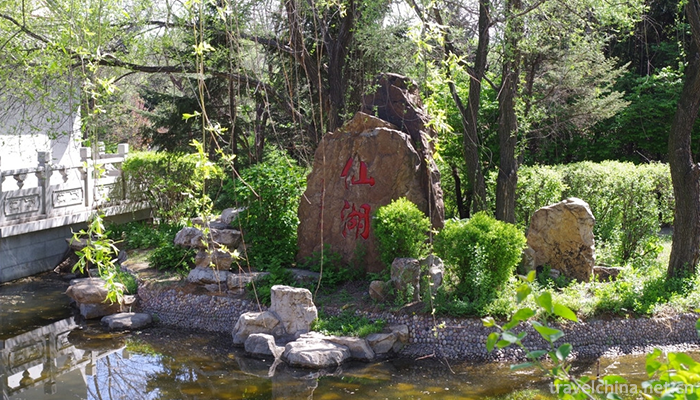
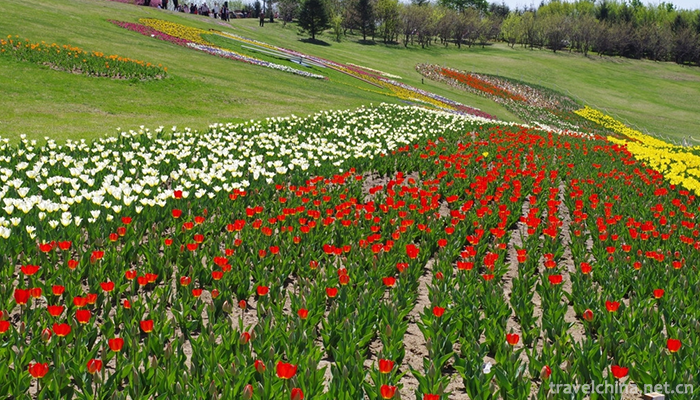
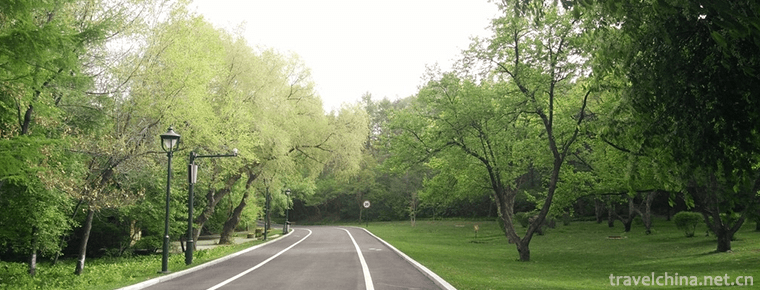
Shenyang Botanical Garden
-
Chengdu JinJiang Hotel
Jinjiang Hotel is the first five-star hotel in southwest China. It is located in Renmin South Road, the main road of Chengdu City, adjacent to the famous Funan River and echoes Tianfu Square
Views: 157 Time 2018-12-16 -
Dongba Valley Scenic Area
Dongba Valley Scenic Area, located at the foot of Yulong Snow Mountain, Yunnan Province, 15 kilometers away from Lijiang River, is a natural ecological Grand Canyon, a rift valley torn apart during th
Views: 149 Time 2018-12-20 -
Eight Immortals Crossing the Sea Scenic Area
Eight Immortals Crossing the Sea Scenic Area, also known as Eight Immortals Crossing the Sea and Eight Immortals Crossing the Haikou, is situated on the shore of the North Yellow Sea in Penglai City
Views: 241 Time 2018-12-23 -
Yuan Dynasty Capital City Wall Site Park Yuandadou Chengyuan Site Park
The Yuandu Chengyuan Site Park was built on the Tucheng Site of Yuandu (National Key Cultural Relics Protection Unit, batch No. VI-1). It is located near Mingguang Village, Southern College Road
Views: 163 Time 2018-12-23 -
qingdao olympic sailing center
Qingdao Olympic Sailing Center Scenic Spot is located in Fushan Bay, Qingdao City, and Qingdao's landmark scenic spot - May 4th Square offshore, covering an area of about 45 hectares
Views: 265 Time 2019-02-07 -
Big Buddha Cultural Tourist Area in Zigong Rong County
The Dafo Cultural Tourist Area of Zigong Rong County was opened to the outside world in 1982. It covers an area of 32,470 square meters and has a building area of 3,403 square meters. There are a wide
Views: 216 Time 2019-03-22 -
Baling Opera
Baling Opera, a local traditional drama in Yueyang City, Hunan Province, is one of the national intangible cultural heritage.
Views: 177 Time 2019-04-02 -
April Eighth Girls Day of Miao Nationality
"Girl's Day" originated in memory of Yang Bamei, a heroine. Legend has it that in the Northern Song Dynasty, Yang Wenguang, a famous general, was ordered to be plain and barbarous. After def
Views: 218 Time 2019-06-05 -
Legend of the Three Kingdoms
The legend of the Three Kingdoms is a kind of folk literature which was approved by the State Council and listed in the fourth batch of national intangible cultural heritage list in 2014.
Views: 226 Time 2019-06-12 -
Back to back entanglement
Tongbei Bianquan, also known as Hongdong Tongbeiquan, is a complete and systematic set of traditional boxing. It combines the advantages of both inside and outside. It is divided into mother boxing an
Views: 147 Time 2019-06-21 -
Long Drum Dance of Yao Nationality
Chinese Yao folk dance. Popular in Guangdong, Guangxi, Hunan and other provinces where Yao people live together, most of them perform on traditional Yao festivals, harvest celebrations, relocation or
Views: 262 Time 2019-07-11 -
Guangan landform
The topography of Guang'an City is fan-shaped distributed between the hills and parallel valleys in eastern Sichuan, which belongs to the Sichuan basin bottom extending to the basin periphery gradually. The Huaying mountains, which run through the so
Views: 117 Time 2020-12-19
